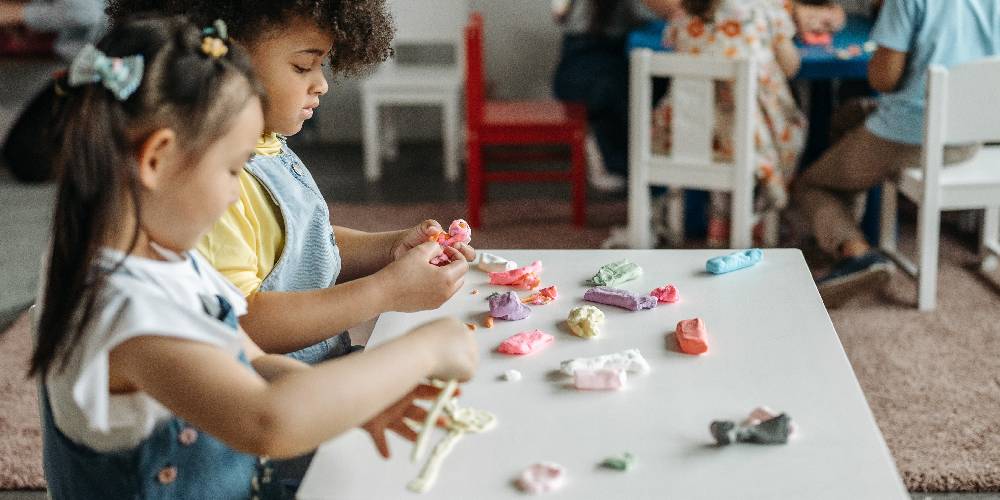As a neuro-developmental disability, autism can impact a child’s behavior, way of communicating, social interaction, and ability to interact with the environment and others. This may bring challenges for a child and their parents.
The research shows that, for parents, the experience of distress, impaired mental health, fatigue, frustration, lower levels of resilience, poorer quality social life, and feelings of vulnerability are very real.
But, as a study published in the journal, Brain Sciences, noted, “Learning to effectively cope with [a] child’s behavior and implement appropriate parenting practices” moves the needle. Support, including professional guidance, is strongly protective against the loss of emotional wellbeing.
So, how can you support a child with autism? What steps will help you — and your child — to feel more in control? How can you support the best interests of both your child and yourself? Let’s take a look…
7 Evidence-based approaches for helping children with autism
These seven evidence-based approaches can make a world of difference for your autistic child and yourself. Change may be challenging so take your time, implement gently, and use whichever approaches work.
1. Identify trigger points
Have you noticed any trigger points? Situations or events that cause your child distress?
The question of how to help a child with autism begins with awareness. So, take note of these triggers. If you feel tired, write them down so you don’t forget. With a little investigation, you will likely identify provocations you’d not noticed before. Once you know which triggers can prompt distress, they become easier to avoid or manage. This helps to create a more stable environment.
This may circumvent meltdowns or shutdowns; responses which result from information or sensory overload, causing distress, an inability to cope, or withdrawal. It might also ease stimming; the behaviors that many autistic people employ to self-soothe. Behaviors like fidgeting, rocking back and forth, twiddling, and word repetition.
2. Speak clearly and concisely
Autistic children may be quite literal, so consider what you wish to say before you speak. Clear, straightforward language is best. Avoid the need to read between the lines, as well as the use of sarcasm and idioms.
To avoid confusion or overwhelm, also:
— Ensure instructions are plainly stated
— Keep directions simple. As one parent put it, she uses a “one sock at a time” approach
— When appropriate, make statements instead of asking questions. For example, “Make your bed now” rather than “Could you make your bed now?”
— If your child doesn’t understand what you’ve said, repeat or re-phrase as needed
— Avoid multi-step requests or statements
— Use praise and positive words
3. Implement simple rules
Do you find your child becomes lost, distressed, or overwhelmed when faced with a slew of information or instructions?
Many autistic children do. Too much can be just, well, too much.
Understand that autistic people often have rigid patterns of thinking. So, structure, rules, and routine may help. Having simple regulations and patterns can provide a sense of stable safety; knowledge in an uncertain world. This allows an autistic child to feel comfortable, enabling them to behave well and prosper.
With this in mind, establish and follow rules that could help your child to thrive:
— Make routine a rule, when possible. A stable, reliable schedule helps an autistic child to feel relaxed and in control
— Practice time limit rules. This should include ending at a certain time rather than when a project has been completed. Why? To learn to cope with transition. Support your child through this process as change can be difficult
— As mentioned above, clear and concise speech ought to be protocol
— Set realistic expectations
— Give a choice of two straight-forward options. For example, orange juice or apple juice. You can use a tool like a visual choice board to ease the decision making process
— Keep instructions simple, short, and to the (literal) point
— Give your child time to process an instruction or comment
— Focus your child’s attention on only one task at a time
— Tell your child what they should do, not what they shouldn’t do. Say, “Beth, walk down the hallway,” not, “Beth, don’t run inside.”
— Get your child’s attention before communicating
— Work with your child to complete a direction, rather than giving up
Remember: simple rules are powerful and calming for an autist child.
4. Create an appropriate physical environment
Excessive stimulation — whether in the form of loud noise, flickering fluorescent lights, crowded space, or other — can be extremely difficult for an autistic person to bear. This additional arousal can trigger meltdowns, shutdowns, stimming, or other challenging behaviors.
Helping children with autism means being aware of the possible overload that may accompany a physical environment. Adjusting the setting, where possible, can limit triggers and promote a safe, comfortable space.
To do this:
— Consider their physical triggers. See if they can be removed or adapted. For example, bright lights could be dimmed, loud noises could be turned down, and strong smells avoided
— A swing set or weighted blanket can be incorporated into a room
— Position comfort items within easy reach. A favorite toy, a calming book, a well-loved video
— Create a quiet space (or room) where your child can feel safe and retreat to, when needed
— Incorporate colors that your child loves into the decor and design of your home and their space
— If your child is prone to anger, remove items that can be thrown
— Bring a pet in as a welcome member of the family
5. Seek professional help and support
Professional support can make all the difference to the wellbeing of both an autistic child and their parents. For a child, expert help can improve function, teach ways to soothe stress and regulate emotion, enhance effective communication, and be incredibly empowering.
At XR Health, we use evidence-based treatment approaches like:
— Behavioral Analysis (ABA)
— Picture Exchange Communication Systems (PECS),
— Treatment of Autistic and Communication Handicapped Children (TEACH)
— Speech therapy
— Cognitive Behavioral Therapy (CBT)
— Mindfulness
Your child’s dedicated therapist will create a personalized treatment plan for your child, with only suitable therapies included.
But at XR Health we offer an important difference to traditional therapy. We approach autism in a fun way… by combining virtual reality for autism, game playing, and treatment. Our treatment sessions are also conducted virtually; in the comfort, safety, and stability of your home.
Many of our autistic patients love this approach! Book an online evaluation to discuss how we can help.
6. Find ways to communicate non-verbally
An autistic child can find oral communication challenging. But meaningful interactions are based on more than words alone. Harness the power of non-verbal messages to relay and improve understanding between yourself and your child. This might look like:
— Using your voice and body when you speak. Point when you say, “Look”. Jump when you say, “Jump.” Sit when you say, “Sit down.” Exaggerated movements can help to join the dots between your words and their meaning
— Use eye contact (if your child is comfortable with this)
— Encourage play and enjoy this time together
— Try visual supports like pictures or a visual choice board
— Follow your child’s lead and respond appropriately
In addition, practice uncovering the true meaning your child wishes to convey. For example, a meltdown can signal overwhelm. Becoming upset might be a sign of uncomfortable new clothing. Yelling may happen after a change in routine. Playing detective can discover ways to enhance communication.
Every child is unique, with varied abilities and preferences. Time spend developing stronger communication, including the non-verbal type, can be a game changer that lessens stress for everyone.
7. Educate friends and family
Family and friends may wonder about “dealing with autism”. What they can do to help? How to support a child with autism in the best way possible?
The first thing to remind people is that the best way to help an autistic child is to lead with compassion and patience. That all children are different and kindness is always the best approach.
Talk about your child’s abilities, loves, and passions. A shared hobby or interest can be wonderful for connection!
Discuss triggers that can overwhelm your child, behaviors that point to growing distress, and ways to create calm.
Encourage positive communication in a way that is suited to your autistic child.
Direct them to this article so they can learn important approaches. Like speaking clearly and concisely using literal phrases. Giving short, succinct instructions when needed. Allowing time for a comment to be processed. And always remaining calm.
As a wonderful bonus, research shows that receiving family and social support is a powerful way to boost stress reduction, life enjoyment, and optimism for parents of autistic children.
The takeaway
Like all children, helping children with autism requires acceptance, openness, gentleness, patience, love, persistence, support, and knowledge. As well as tailored approaches to support the specific child.
For many children with autism, life becomes easier when trigger points are identified and managed, clear, concise language is used, simple rules exist, effective non-verbal communication is embraced and enjoyed, and there is an appropriate physical environment to support them.
In conjunction with professional autism-specific treatment and the support of loved ones, your child can thrive… and so can you!












